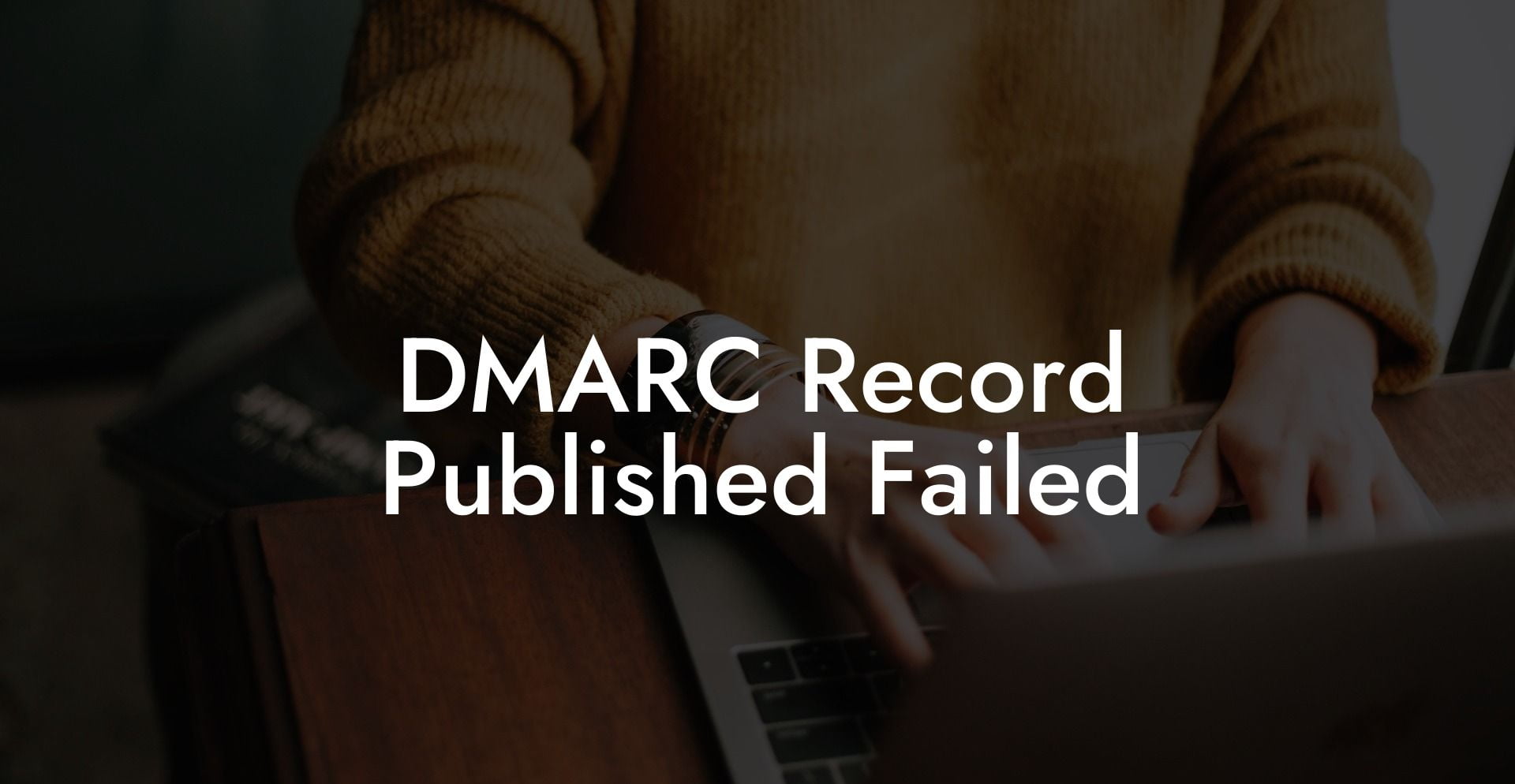In the world of cybersecurity, one minor oversight can lead to devastating consequences for your organization. One such oversight could be failing to publish a DMARC record, exposing your business to potential email spoofing and phishing attacks. This blog post discusses the importance of the DMARC record and explores some common reasons behind its publication failure. Read on to learn how to avoid and troubleshoot these issues, ensuring the security of your organization's email communications.
DMARC Record Published Failed Table of Contents
What is DMARC?
DMARC (Domain-based Message Authentication, Reporting & Conformance) is an email authentication protocol that works alongside SPF (Sender Policy Framework) and DKIM (DomainKeys Identified Mail) to protect against email spoofing and phishing attacks. DMARC helps email receivers verify that an incoming message is authentic and originates from a legitimate source by checking its SPF and DKIM records. DMARC also provides the domain owner with instructions on how to handle unauthenticated messages and report back on their findings.
Why DMARC Record Publication May Fail
Protect Your Data Today With a Secure Password Manager. Our Top Password Managers:
DMARC records are typically published in the Domain Name System (DNS) as a TXT record. However, publication can fail due to a variety of reasons, including:
- Incorrect Syntax: DMARC records must follow a specific structure and syntax, including adherence to tags and qualifiers. Errors in the syntax, such as typos, missing tags, or incorrect placement, may prevent the record from being recognized and validated.
- DNS Propagation Delays: DNS propagation can sometimes take up to 48 hours. During this time, your newly published DMARC record may not be visible or active yet, causing potential validation issues.
- Incorrect Configuration: Misconfiguration of the SPF or DKIM records can undermine your DMARC policy, resulting in record publication failure. Double-checking your SPF and DKIM configurations will aid in resolving this issue.
- Hosting Limitations: Some hosting providers have restrictions on the number or size of TXT records you can create. These limitations can impede your ability to publish a DMARC record. Consult with your hosting provider to determine any restrictions and how to address them.
How to Troubleshoot DMARC Publication Failure
Following these steps can help you identify and fix issues with your DMARC record publication:
- Verify Syntax: Ensure that your DMARC record follows the correct syntax by cross-referencing it with the DMARC specification. You can use online tools to validate the syntax, such as the DMARC Record Checker.
- Check Propagation: Give your DNS enough time to propagate the changes (up to 48 hours). Utilize a DNS propagation checker tool to verify the record's visibility across different locations.
- Review Configuration: Double-check your SPF and DKIM records for proper configuration. Any inconsistencies should be resolved before attempting to publish the DMARC record again.
- Seek Support: If you're still experiencing issues, contact your hosting provider or a cybersecurity expert for assistance in identifying and resolving any underlying problems.
DMARC Record Published Failed Example:
Imagine a company named "Example Corp" wants to publish a DMARC record to protect its domain from email spoofing. They create the following record:
`v=DMARC1; p=none; rua=mailto:dmarc@example.com`
However, after waiting for several hours, they notice that the DMARC validation is still failing. After running a DNS propagation check, they realize the record is not yet visible due to propagation delays. They give it another 24 hours, and once the propagation is complete, their DMARC record is successfully published and validated, strengthening their email security.
Now that you understand the importance of publishing a DMARC record and the potential hurdles that may be encountered, you can take the necessary steps to secure your organization's email communications. Remember, proactively addressing these issues will not only protect your brand reputation but also minimize the risk of falling victim to email spoofing and phishing attacks. If you found this post informative and valuable, please consider sharing it and exploring other articles on Voice Phishing to further bolster your cybersecurity knowledge.
Protect Your Data Today With a Secure Password Manager. Our Top Password Managers:















